And so Jean-Luc Picard has finally gotten off Earth, so now the action can start, right?
Well, sorta kinda. Picard makes a stop on the way to Freecloud (to Musiker’s annoyance), and we get yet still more backstory and exposition, as well as at least a little bit of action, as well as a couple of amusing original-series callbacks.
Having said that, we’ve gotten more cultural details about the Romulan people in these four episodes of Picard than in the entirety of the previous 53 years’ worth of TV shows and movies, so there’s that…
The Romulans were introduced in “Balance of Terror” in 1966, during the first season of the original series. Later that season, in “Errand of Mercy,” the Klingons were introduced. The two empires have continued as both antagonists and allies in the years since, but the Klingons have received considerably more focus. They appeared in six episodes of the original series, where the Romulans were only in four (and in two of those, “The Deadly Years” and “The Way to Eden,” no Romulans actually appeared). Due to Worf being part of the Next Generation and Deep Space Nine cast, and B’Elanna Torres being part of the Voyager cast, those three shows tended to explore Klingon culture more than Romulan culture, and with notable exceptions like TNG’s “Unification” two-parter and especially the brilliant “Face of the Enemy,” comparatively little was done with the Romulans. Many episodes (“Tin Man,” “In the Pale Moonlight,” “Message in a Bottle,” “Babel One”/”United”/”The Aenar”) and movies (Nemesis, the 2009 Star Trek) that have had them as the bad guys still didn’t really do anything with them.
Buy the Book
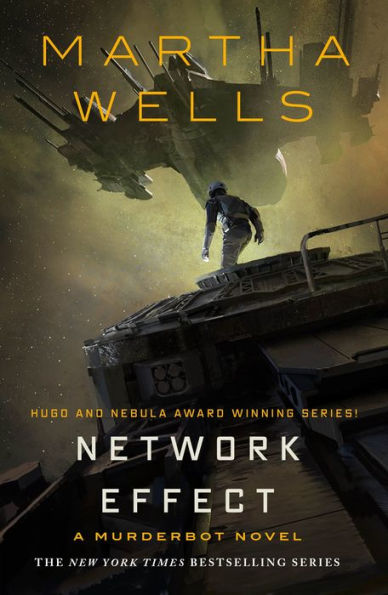

Network Effect
Picard has changed that. Every episode has had new revelations about the Romulan people, and it’s been glorious, from the card games they play to the concept of Ganmadan (basically the Romulan version of Ragnarok) to the introduction of the Bene Gesserit—er, that is, the Qowat Milat, a group of, basically, warrior nuns. They follow the practice of absolute candor (hence the episode’s title), which I love. The Romulans were established from jump as an offshoot of the Vulcan people, and this is an interesting notion that feels like it evolved from Vulcan’s embrace of logic and the oft-stated dictum that Vulcans do not lie. The Qowat Milat always tell the truth, regardless of how unpleasant that might make things.
A bit of history: While it’s never been made explicit onscreen, it’s generally been assumed that the Romulans broke away from Vulcan around the time of Surak’s adoption of the principles of logic and suppressing one’s emotions, philosophies that the Romulans themselves do not follow in the least. This in particular has been explored in various works of tie-in fiction about the Romulans. The assumption has often been that they left because they rejected Surak’s logic, but the Vulcan’s Soul trilogy written by Susan Shwartz and the late Josepha Sherman has a different, very nifty take: that the Romulans were Vulcans who were sent off world by Surak with his blessing, because the chaos on Vulcan in Surak’s time was such that he was concerned his teachings about embracing logic wouldn’t survive. The intent of the exodus to Romulus was to preserve Surak’s teachings, but the hardships of the journey across the stars led to the Romulans instead rejecting Surak.
The Qowat Milat feels very much like a remnant of the Romulans’ Vulcan past (especially given the matriarchal hints seen in places like “Amok Time,” and aided by the outfits that look very much like those worn by female Vulcans in that episode as well as The Motion Picture and The Search for Spock and various Enterprise episodes). It helps that Amirah Vann, the only Qowat Milat with a speaking part aside from Elnor (more on him in a minute), imbues Zani with a regal-yet-friendly presence that reminds me favorably of Camille Saviola’s portrayal of Kai Opaka on DS9.
We meet the Qowat Milat in Yet Another Expository Flashback, as we see the planet Vashti, the hub for the relocation of Romulan refugees following the supernova that was the impetus behind the story of the 2009 Star Trek. Picard has made friends with some of the refugees, particularly the Qowat Milat, who have aided in the relocation efforts, and especially a young boy named Elnor, whom the Qowat Milat have taken in.
Elnor is played as a boy by Ian Nunney, and then in the present as an adult by regular cast member Evan Evagora (listed in the opening credits for the first time here), and I gotta say I liked him better as a kid who eagerly devours the copy of Alexandre Dumas’s The Three Musketeers that Picard gives him and who learns how to fence than I do the dour grownup. I must confess to thinking of Elnor as I saw him in the previews and promo material as Space Legolas (his Tolkien-ish name aided in that), and then at the top of the episode I was thinking he’s more Space d’Artagnan—but by the time the episode ended, I realized he’s Space Yojimbo, as he feels a lot like he’s channeling Toshiro Mifune’s ronin character in Yojimbo, Sanjuro, and Machibuse.
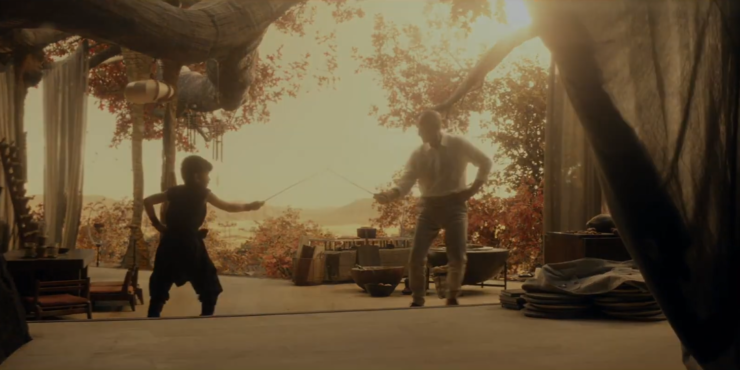
Men generally don’t get to be Qowat Milat, but Elnor—an orphan with nowhere else to go whom Zani and the others took in—has trained to become one of them anyhow. Picard comes to Vashti for the extra muscle that a Qowat Milat would provide, and he knows he can count on their help because, as is revealed at the very end, they will only pledge their sword to a notion if it’s a lost cause.
Elnor, is pissed that Picard basically abandoned him—a feeling shared by most of the Romulan population of Vashti, expressed verbally by a former senator. Tenquem Adrev, played with eloquence by Evan Parke, rips the Federation in general and Picard in particular for how they handled the refugee crisis. Adrev then challenges Picard to a duel, and it’s always fun to see Sir Patrick Stewart wield a sword. He actually does so twice in the episode. However, Elnor then beheads Adrev in one swipe, which is also when he announces that he’s decided to dedicate his sword to Picard’s cause despite being annoyed with him.
(That sword, by the way, must be made of some kind of impressive alloy and sharpness, as—despite what you may have been told by the Highlander franchise—it’s damn near impossible to behead someone with one swipe of a sword. There’s a whole lot of bone and muscle in the neck to hack through, and there’s a reason why beheadings are usually done via things like guillotines, which build up a lot more momentum than a sword swipe ever could.)
Back on La Sirena they have their own problems, as they come under attack by a local gang leader, and here’s where we get the two original series callbacks. The first is simply that the actors all have to shake in their seats and bounce around the bridge—though nobody actually falls out of their chairs, which would make the callback complete. And the reason why they’re bouncing around is the second callback, as the gang leader who’s attacking them has an old-style Bird of Prey, the Romulan ship we saw used in “Balance of Terror” and “The Deadly Years.” It’s fun to see that model—which TNG abandoned in favor of the warbird design—given the 21st-century F/X treatment. While I normally don’t give a hoot about ship design, this particular one was a delight.
The attack is mostly there so that the rest of the cast has something to do, and even at that, they’re not entirely successful. Musiker really needs more to do than bitch to Picard and then go ahead and do what he asks anyhow, though Michelle Hurd continues to play her with an acid bitterness that obscures brilliant competence and professionalism. And Jurati has literally no purpose in this particular story, but she’s on the ship, so they turn her into Sylvia Tilly for an episode, babbling annoyingly at Rios while he’s trying to read and generally just providing word vomit to fill time and justify Allison Pill’s place in the opening credits.
Santiago Cabrera is having way too much fun playing the various holograms on the ship. Having met the medical and navigation ones, this time ’round we get the Emergency Hospitality Hologram (who re-creates Picard’s study in Labarre on La Sirena‘s holodeck so they can keep using the set) and “Emmett,” who is apparently a pilot, and who mostly only speaks Spanish. He also looks like he’s just been on a bender.
I must confess to being real curious about how these various holograms came about and who programmed them and any number of other things. Rios declares angrily, “I hate that fucking hospitality program,” and in fact the EHH deactivates the minute Rios walks into the room, which is obviously a standing order. It feels like he didn’t choose the holograms, but they all look like him. It’s actually kind of entertaining, and it’s a great acting exercise for Cabrera—which is good, as the character of Rios is still pretty nowhere.
We’ve already seen the Federation’s side of the decision to abandon the Romulan refugees to their fate, and this episode shows us the Romulan side of it, and I continue to intensely dislike this particular plot choice. Again, we’ve been down this road before with the Klingons in The Undiscovered Country, not to mention the fact that the Federation has always been about helping people, going all the way back to “The Corbomite Maneuver” when the Enterprise offered to aid the First Federation ship when they appeared to be in distress even though that ship had been nothing but hostile. The entire history of the franchise is one where our heroes help people even if they’re an enemy, whether it’s the Gorn captain that Kirk’s been put into an arena with or the depowered entity who’s now stuck on your ship and being menaced by the Calamarain or the Jem’Hadar who were attacked by rogue elements or the various hostile Delta Quadrant powers that Voyager encountered but nonetheless provided help to when needed, and on and on and on, including the entire arc of Enterprise that showed Earth bringing species that were at loggerheads together to form the Federation. The Dominion War ended, not due to military might, but due to an act of compassion: Odo offering to return to the Great Link and cure the Founders of the disease that was ravaging them. It’s not a coincidence that dozens of Star Trek episodes open with the crew responding to a distress call.
So the entire foundation of Picard is one I’m having incredible difficulty wrapping my brain around. This is not what Starfleet has ever been, and I’m just not buying it right now.
The title character isn’t exactly coming off well, either. Last week we found out that he abandoned his aide when he resigned, and this week we learn that he abandoned an entire planet full of refugees. Picard just flushing and restarting his life is one that has had awful consequences, ones that he doesn’t really seem to be facing. There’s handwavey gestures toward it, but ultimately, Picard is getting off pretty easy for being a total douchecanoe, and I really hope that the series remembers that actions have consequences that can’t be solved by saying “I’m sorry” in Stewart’s lovely, heartfelt voice.
I haven’t even mentioned the Borg Cube part of the story yet, but that’s mainly because not a whole helluva lot actually happens there. Narek continues to seduce Soji (there’s an adorable scene of them sliding down a very smooth surface) and Rizzo and Narek continue to channel the Lannister siblings for no compellingly good reason. We do get one revelation, though: apparently the Tal Shiar/Zhat Vash think there are lot more than two daughters of Data, as Rizzo indicates that there’s a whole mess of synths that look like Isa Briones out there somewhere, and Narek’s attempting to learn where they are without activating her and turning her into the killing machine that Dahj turned into.
The episode ends with Jeri Ryan pulling a Leonard Nimoy by being listed as a special guest star in the opening credits, but not actually appearing until the very last second with one line of dialogue. Nice work if you can get it. We’ll get more of Seven of Nine next week when we finally get to Freecloud, and hopefully the whole cast will have something to do…
Keith R.A. DeCandido picked that title for the review because St. Jude is best known as the patron saint of lost causes in Christian lore.


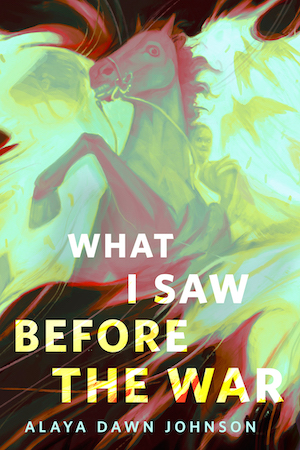
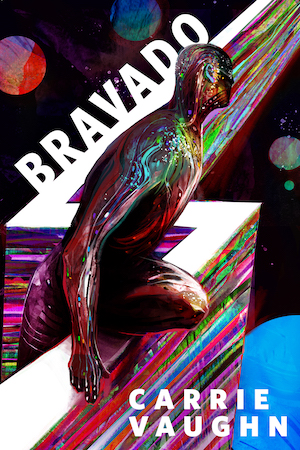
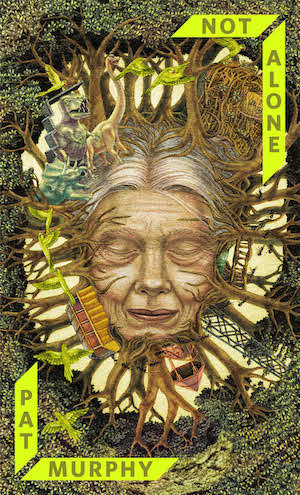
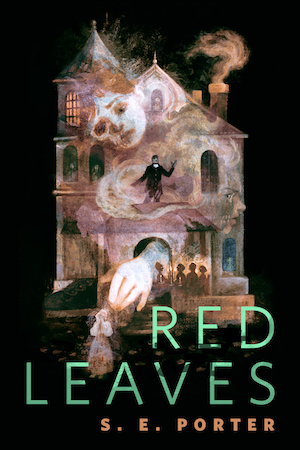




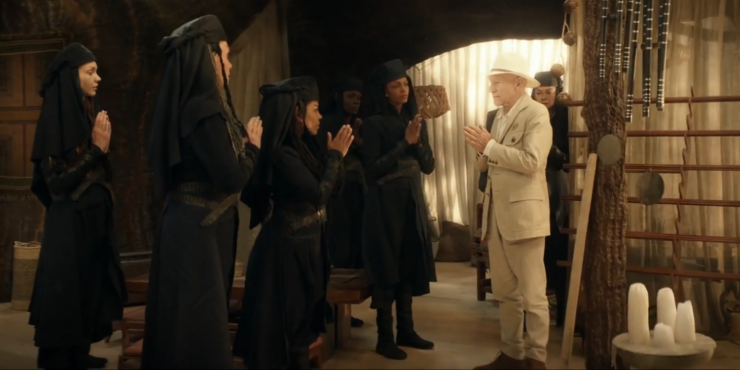
There are lots of little “side views” of Romulan culture that are being afforded here, like the deep-seated cultural preference for secrecy and privacy (the false front door, the hidden passenger manifests, etc) which obviously manifests in the Romulans “reliable treachery – like basing a a weapons placement and military base on a Bajoran moon after being given leave to set up a military hospital – the Romulans were all like “What?!? we need to protect the hospital, Bajor.”
The Church of Total Candor probably makes these women pretty much despised by Romulan society at large, then. No wonder they turned themselves into an order of Ninja Nuns. I also really, really appreciated the demographic diversity we see in the slice of the Romulan people we get to see. Different types of people, fashions, etc. I’m old enough to remember the preposterous backlash over Tuvok being “black” because Vulans we all saw previously are fair-skinned and silky-haired. I waged that stupid fight on a Prodigy Messageboard (!) asking knuckleheads to descibe a typical human. I also liked how they added the explanation about the heavier brows and forehead creases as being basically an ethnic trait (which, at least to me, suggests a long-seated dominance of Romulan government by one region/culture during the TNG era – all the Romulans we saw in positions of authority have the pronounced foreheads. That “nation” must been in power at the time.)
Space Legolas, Space d’Artagnan and Space Yojimbo walk into a bar . . .
@krad Thanks for mentioning Machibuse. I didn’t realize there was a third film with that character.
I understand about rising and then not fulfilling the expectations, but don’t the Romulans actually know that Picard essentially got fired for trying to help them? I would believe more if someone younger confronted and accused him, not an old former senator. That moment was not entirely convincing to me.
This series should be called Star Trek: Whipping Boy. Seems like Picard is on a journey to visit as many beings as possible that he has hurt, neglected, or just generally pissed off.
I quite enjoyed this one. Vashti was an aesthetically pleasant amalgamation of Asian motifs, and I’m enjoying the exploration of different aspects of Romulan culture. They’re quickly becoming my favorite Trek species.
We’re certainly seeing more telegraphed resolutions in the themes this episode presented. Predictions – The Zhat Vash (likely a future version of the Tal Shiar) approach to averting Ganmadan/Ragnarok (the details of which are likely the “secret so profound it could break minds”) is to overtake the Federation of the recent past and use it as a tool against the emerging Borg/Synth uprising that will consume all organic life (aside from some surviving future Romulans presumably). They were willing to write off the lives of millions of their own species (by interrupting the relocation) just for this strategic foothold within the Federation – which would have been less of a moral dilemma given that so many had already died in their future, but, this also means that their standards for what a victory in Ganmadan looks like will be very low, and billions may still die in the coming conflict under the direction of the Zhat Vash. They’ll go for sure fire survival no matter the casualties, where the Qowat Milat would go for the long-shot miracle that saves countless lives. Just as the good (Data essence) in Soji will ultimately win out, no doubt thanks to Picard’s influence, the honorable approach of the Qowat Milat will win out over the premeditated Zhat Vash plot, again no doubt thanks to Picard’s guidance. At any rate, it’ll be interesting to see ragnarok employed not as a traditional prophecy, but as an observed future event. I imagine the sister and brother are present day Tal Shiar, and the sister has been initiated into the secret, where he has not. The Romulan ship that was assimilated likely belonged to time travelling Zhat Vash agents who failed in their mission.
As for the state of the Federation, it should rebound once the Borg threat is rooted out and eliminated, Ganmadan is averted, and the Zhat Vash cease to exist as their timeline splits from prime reality. Picard will be redeemed as a savior of the Romulan people, and all people. Or something like that.
Yesterday, just before watching this episode, I read the “Last best hope” by Una McCormack, which tells the story of evacuation of Romulans. It made me more emotional than I expected; it is not pretty to watch Starfleet descend from high ideals to… well, politic, and at the same time Picard being broken by it – very slowly. But it introduces the Quowat Milat. I´m not sure how well I´d understand this episode without having read the book first; I think it gives a good backstory.
This is my favorite episode yet, with some really terrific dialogue and character work from Michael Chabon. Dr. Jurati’s ramblings about space travel were a lot of fun, and I’m wondering just how many more holographic avatars Rios has. We’re getting more insights into Romulan culture; this show has fleshed out the Romulans better in four episodes than TNG and DS9 did in a dozen years. And Picard is being written in a nicely complex way — he’s sympathetic and caring and devoted to his mission, but still limited by his intellectual, reserved nature. When Elnor was asking him why Picard needed him, you could tell that he was seeking a personal, emotional answer and was hurt by the pure calculation of Picard’s stated rationale.
Peyton List has never been sexier (in part because I don’t think I’ve heard her do an English accent before), but the fact that the guy her character is flirting with is her brother makes it creepy. I’m not crazy about that part.
It would also be nice if they hadn’t spoiled the surprise appearance at the end by listing the actress’s name in the opening titles. Also, it was rather antiquated writing to have all the characters defaulting to male pronouns for the unidentified pilot of the ship that came to their rescue. Scenes where all the characters expect someone to be male and then they surprisingly turn out to be female are a trope that should’ve died out by now. And these days, we’ve finally figured out that it’s okay to use “they/them” for an unidentified person, because singular “they” has been part of English for centuries longer than the artificial, erroneous rule forbidding it.
Keith, it’s interesting that you see the Qowat Milat as Vulcan-like. I saw them as the opposite, since their philosophy is to be completely open in expressing one’s emotions, to always say exactly what they feel rather than repressing it, whether through logical discipline like Vulcans or through cunning and deception like mainstream Romulan society. I’ve seen it pointed out that Romulans should be as overwhelmed by their passions as Vulcans are and should have as much need to regulate and cope with them as Vulcans do, and in general have done so by regimenting themselves in service to the state rather than to logic and intellect. It seems the QM have tried to cope with their emotion by embracing it — they just flow where the raging current takes them rather than trying to resist it, and thus can be more at peace with what they feel.
As for Elnor’s sword, I assume it’s some kind of high-tech futuristic blade honed to monomolecular thinness, like a Niven variable sword. Not much point in wielding a sword in a high-tech space-age society with ray guns unless the sword has some kind of high technology in itself.
“So the entire foundation of Picard is one I’m having incredible difficulty wrapping my brain around. This is not what Starfleet has ever been, and I’m just not buying it right now.”
But that’s the whole point — that Starfleet and the Federation have lost their way. ST has always shown that “good only triumphs over evil if good is very, very careful,” that maintaining the Federation’s ideals requires eternal vigilance and there’s always the risk of backsliding — as we saw with the conspiracy in TUC, with “The Drumhead,” with the compromise-in-wartime storylines of DS9 and DSC, with Insurrection, and with just about every Section 31 story. But in the past, the heroes have always managed to pull Starfleet back from the brink and keep it true to its values. This time, they failed. It makes sense, really — this was a Federation still deeply scarred by the Dominion War, and it stands to reason that a lot of people would be fearful and traumatized and inclined to isolationism. So it stands to reason that the additional trauma of the synth attack would give those reactionary forces more support in the conversation and push the Overton window far enough in their favor that they got their way this time.
But I assume the arc of this series is going to be about Picard reminding the Federation of what it used to stand for and changing things for the better once again. It’s just that in these serialized times, it takes more than one episode or movie or season to bring it about.
Massively off-topic:
KRAD, would you consider doing a series of reviews of THE WILD, WILD WEST?After Robert Conrad’s recent passing, I re-watched a few eps and greatly enjoyed them. The series did have a lot of SF elements (it might count as the first steampunk tv series), and you’ve already re-watched two ’60s TV shows (TOS and BATMAN ’66).
@1/LadyBelaine: “I also liked how they added the explanation about the heavier brows and forehead creases as being basically an ethnic trait (which, at least to me, suggests a long-seated dominance of Romulan government by one region/culture during the TNG era – all the Romulans we saw in positions of authority have the pronounced foreheads. That “nation” must been in power at the time.)”
I realized long ago that most of the Romulans we saw in TOS were wearing helmets that covered their foreheads, so I tended to assume that most Romulans had always had ridged brows and it was just the ruling/elite minority that still looked Vulcan (because the helmetless ones were mostly commanders and subcommanders in the show and ambassadors in the movies). I figured that ethnic elite had fallen from power by TNG. Now, though, it looks like the smooth-browed “Southern” Romulans are more common than I thought.
@3/Valentin: “I understand about rising and then not fulfilling the expectations, but don’t the Romulans actually know that Picard essentially got fired for trying to help them?”
He could’ve still come back as a civilian. He could still have done whatever he could to stay in touch with them and help them through the transition, even if he lost the ability to evacuate more people. And in Elnor’s case, his sense of betrayal is personal — Picard never came back to see him, to read to him, to teach him and be his friend, or maybe to adopt him and give him a home.
I think Picard’s fatal flaw that we’re learning of here is that he’s too inexperienced with failure. For most of his life, he always managed to find a way to triumph, and this time he made grand promises and suffered the greatest failure of his career, and it broke him. He didn’t know how to pick himself up from it, so he withdrew into solitude and depression, considering himself unworthy to help anyone.
They’re playing Picard as the Great White Hope in this — it’s no accident that his outfit in the opening brings up the paternal colonialist types, lofty and privileged. This story so far has been about Picard’s arrogant use of what he sees as his cachet but is really his inherited privilege. He might be *right* for good reasons, but the way he’s handling that is catastrophically wrong. You see it in both large and small things — like his assuming the front desk person will recognize him; he’s even prepared for an out rush of admiration…but not for nobody noting who he is.
He’s made a lot of wrong choices — that entire fourteen years has been a temper tantrum and a *huge* sulk. Zhaban and Laris are well aware of this, and work at accommodating him. He has another tantrum with the reporter, and another with Admiral Clancy.
His responding to that initial “no soup for Romulans!” edict was the reaction of the Great White Saviour being thwarted by bureaucracy and not being aware enough of himself to have a plan B, C, and so on. He doesn’t even turn to Rafi for help — he quits at the first hurdle, presents that as a fair accompli, and gets her inadvertently fired while he runs away and sulks, abandoning *everyone*.
Starfleet and the Federation may have failed, but Jean-Luc Picard failed too, perhaps more so. The Federation is complicit in genocide-by-negligence…and so is Picard. He’s starting to wake up now, but *everyone* is mad at him because of this, and do they should be. That he thinks he’s pursuing a lost cause is a sign he’s getting it now — but has he realized yet that *he’s* the most lost cause of all? He can’t correct the horrendous mistakes he made. Saving Soji doe nothing to make amends for what he did